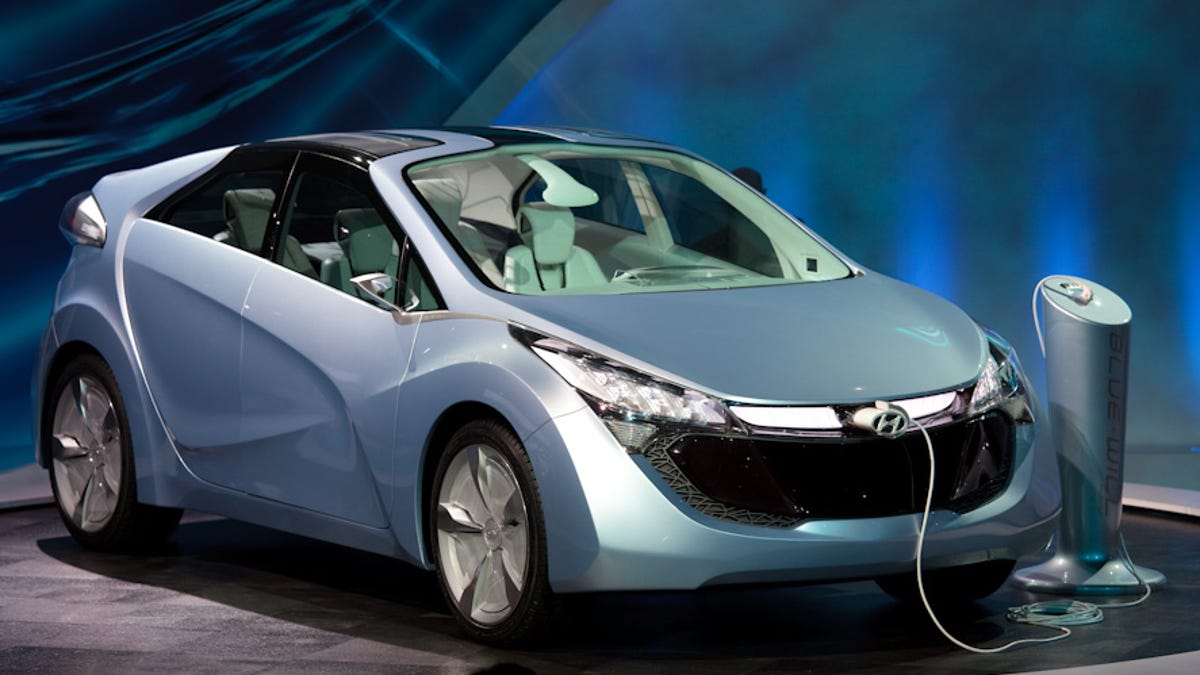Blue-Will: Hyundai's plug-in hybrid concept
The Blue-Will is designed to be light and fuel-efficient, with a range of 20 to 40 miles before the gasoline motor kicks in.

DETROIT--Green is all the rage at the Detroit auto show, but a different hue emerged in the Blue-Will plug-in hybrid concept car that Hyundai revealed Monday.
The car can run solely on its lithium polymer battery for a range of 20 to 40 miles, said Scott Margason, director of product planning for Hyundai Motor America, in an interview here at the North American International Auto Show. Like the Toyota Prius, perhaps the best-known hybrid car, the Blue-Will has an engine that's directly connected to the drive wheels and that runs in parallel with the electric motor.
Hyundai wouldn't talk specifically about plans to make the concept into a production model, but Margason did say the company's concepts are directly linked to real-world plans, often with a two- to three-year lag between concept and reality. "Concepts tend to be the foundation of production vehicles," he said.
The Blue-Will is code-named HND-4 and is the fourth concept vehicle from Hyundai's Namyang Design Center.
The lithium polymer battery in the system, built by another Korean company, LG Chem, is similar to the one in the first Hyundai hybrid, the Sonata BlueDrive that's set to go on sale later this year. Hyundai went with lithium polymer batteries for their superior energy density and weight, Margason said. Even though it's later to the hybrid game than some rivals, it got to skip past the nickel-metal hydride and lithium ion battery technologies, he said.
The Blue-Will also features low-friction tires and a full-length undercover for better fuel economy.
Another feature in the system is low weight, made possible through use of carbon-fiber reinforced plastics and bioplastics. Hyundai pledged to reduce the average weight of its fleet by 10 percent by 2015, said Dave Zuchowski, vice president of national sales at Hyundai Motor America.
"Weight reduction benefits almost everything--fuel economy, performance," Margason said.
Disclosure: Stephen Shankland's spouse is employed by Tesla Motors.

